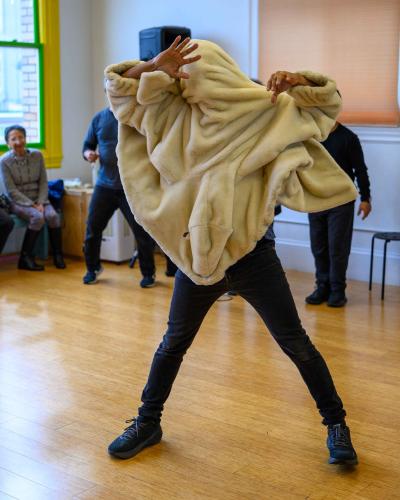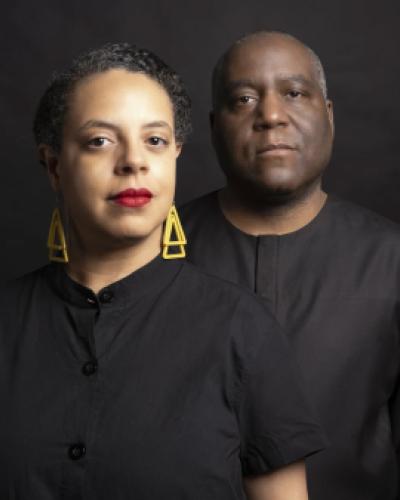A small group of dance artists from Mexico, Japan, Germany, and the U.S. will gather at the Maggie Allesee National Center for Choreography in Florida, known as MANCC, starting Oct. 12. Their goal is to create a new work in just ten days, and Juan Manuel Aldape Muñoz, assistant professor of performing and media arts in the College of Arts and Sciences (A&S), will be in the midst of the action.
NAKA Dance Theater invited Aldape Muñoz, a choreographer and performer, to help design a new performance specifically for Tallahassee, where the work will debut at the end of the residency.
But the international dance company is also counting on Aldape Muñoz to document the process as an embedded writer – a MANCC program supported by the Mellon Foundation. Even as he’s helping to choreograph and rehearse, he’ll also be taking notes, filming, and thinking about a possible journal article.
“I have the double role of being a collaborator and also an embedded writer,” said Aldape Muñoz, who has written extensively about NAKA Dance Theater and features the group in his current book project. “It’s a challenge but also a testament to the artists’ trust of me – being able to participate and also write about it.”
During the residency, the artists will create a new iteration of “Dismantling Tactic X,” a NAKA Dance Theater project that uses dance, percussion, spoken word and song to engage and unveil the ways racism functions in towns and communities, Aldape Muñoz said. The production is made new with each location.
The series debuted in 2018 in San Francisco and has since been performed in Mexico City, in Amatlan, Mexico, and in Oakland, California. The performance in Tallahassee will engage community groups – including re-entry programs and farmworkers groups – as well as faculty at Florida State University.
Aldape Muñoz admires and shares the aesthetic sensibility of NAKA Dance Theater co-founders José Ome Navarrete Mazatl and Debby Kajiyama, who emphasize the labor in their productions.
“Sometimes we dancers are also the stagehands, we are also the lighting crew, we are also the sound crew,” Aldape Muñoz said. “They show you the work as it evolves. They create stunning imagery. They’re also keen and astute in how to use humor and cultivate imagination.”
Last spring, Aldape Muñoz invited NAKA Dance Theater to bring their project “¡Y Basta Ya!” (Enough!) to Ithaca for a collaboration with Cornell’s Department of Performing and Media Arts and various community groups, including the Latino Civic Association of Tompkins County, the Traditional Center for Indigenous Knowledge and Healing, and the nonprofit No Más Lágrimas.
With support from the Mario Einaudi Center for International Studies’ Migrations initiative and the A&S Rural Humanities initiative, students and community members created “¡Y Basta Ya!” through a series of workshops in spring 2024 and performed it at the Kitchen Theater. The project focused on the experiences of indigenous and Latina immigrant women.
Ana Carmona-Pereda ’24, a PMA major, lead workshops, alongside Aldape Muñoz and some other students, gathering stories to form the basis of ¡Y Basta Ya!, then worked with NAKA Dance Theater to rehearse and stage the performance.
“Working with immigrant and indigenous women in Ithaca and surrounding areas, we created a safe and empowering space for vulnerability and visibility,” Carmona-Pereda said. “The result was an entire stage of folks dancing unapologetically to reggaeton, salsa and cumbia. I will forever be grateful for the joy, care and tenderness I experienced during the rehearsal process, final performance and community event.”
Members of that original project still meet periodically, with plans to stage another performance in rural upstate NY.
For Aldape Muñoz, performance and scholarship go hand in hand, an approach apparent in both “¡Y Basta Ya!” and “Dismantling Tactic X.”
“In a university, we talk about helping our students to think and write critically. I don’t think that’s enough. I think we need to help students move critically,” he said. “That’s one of my motivations for the work I do, and why I align so well with Jose and Debby. They think wholistically about who our audiences are, not just what they watch or how they think, but that moving helps us think and see the world in new ways – in important, more inclusive ways.”





